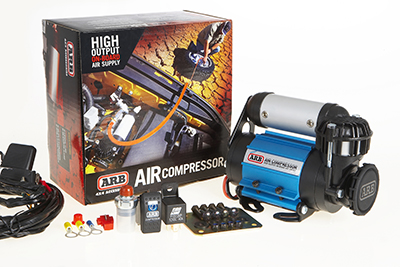Choosing the Right On-Board Air

Inflating Tires on the Trail
As 4x4 owners, we put a great deal of thought into the parts we install on our vehicles, perhaps none more so than our tires. For instance, if you have a Wrangler dedicated to weekend rock crawling you might consider a set of Pro Comp Xtreme MT2's for their durability and aggressive tread design, but if your trail runner is also a daily driver and you live where it snows, you're more likely to opt for the Nitto Terra Grappler for their blend of all-terrain traction and quiet on-road riding, as well as excellent traction in snowy or wet conditions. The best tire for you depends entirely on how and where you'll be using them - and the right kind of on-board air is no different.
No truck, Jeep or SUV is fully prepared for a weekend of off-roading without backup air for reinflating tires. Often, it's necessary for airing tires back up to highway-safe psi levels after having aired them down to increase traction on a tough trail and it's also a lifesaver if you get a flat on the trail. There are many options for on-board air systems and choosing one isn’t easy. That’s why we've put together this general guide to trail air. Of course, the system which works best for you will depend on your personal preferences, what your vehicle is used for most and restrictions like available space and cost.
Portable Compressors
There are a wide variety of portable air compressors for trucks, Jeeps and SUVs and they can be used for airing up tires and activating lockers, among other things.
| Pros:
| Cons:
|
Engine-Driven Compressors
Engine-driven compressors are often mounted under the hood of a vehicle and, as the name suggests, are powered by the engine.
| Pros:
| Cons:
|
CO2 Tanks
CO2 tanks store air in liquid form, allowing for a greater volume of air in a smaller space.
| Pros:
| Cons:
|
Join our mailing list to receive information on new products, special events, discounts and more!
Sign up to receive deals by email!
Sign up to receive text alerts about new product releases, exclusive access to sales, and much more!
Sign up to receive deals by text!
By submitting, you agree to receive recurring autodialed marketing text msgs (e.g. cart reminders) to the mobile number used at opt-in from 4 Wheel Parts (4WP) on 21208. Consent is not a condition of purchase. Msg frequency may vary. Msg & data rates may apply. Reply HELP for help and STOP to cancel. See Terms and Conditions & Privacy Policy








